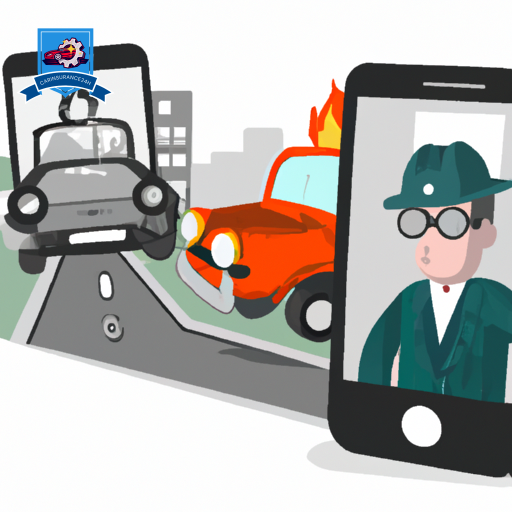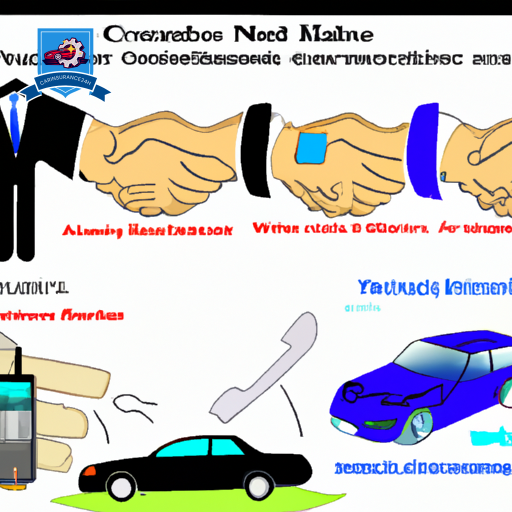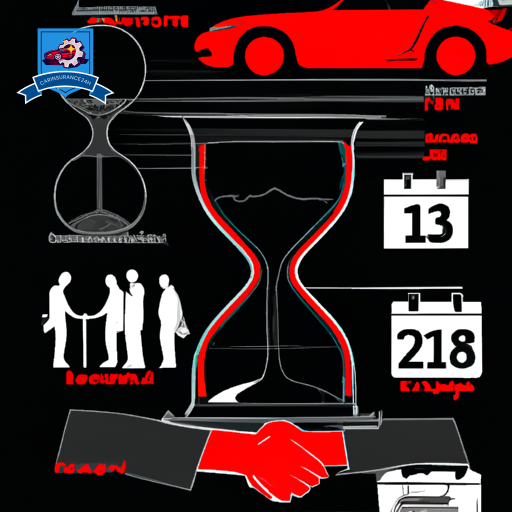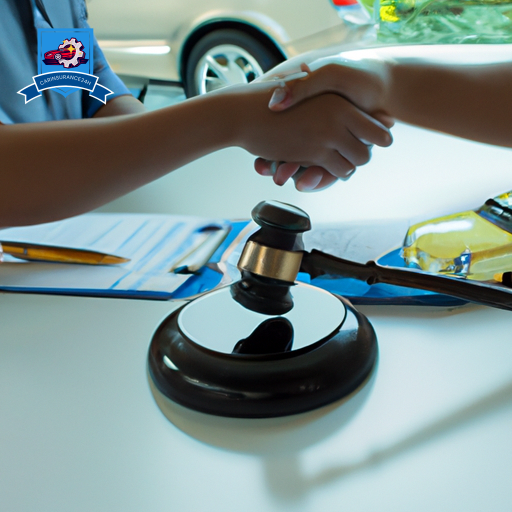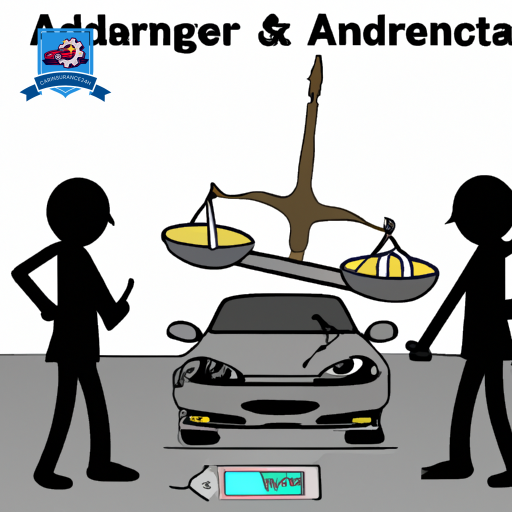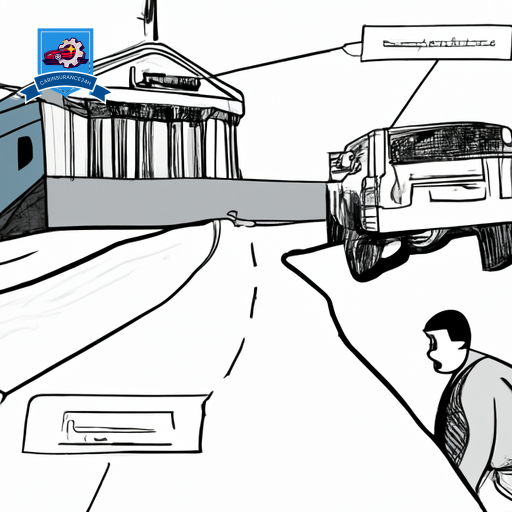Filing a third-party car insurance claim involves a structured procedure that begins with a thorough understanding of what such claims entail.
It is essential first to gather all pertinent information surrounding the incident, including photographic evidence, witness statements, and police reports.
Swiftly reporting the accident to the relevant parties is critical, as is initiating contact with the other driver’s insurance provider.
However, managing the claims process can present numerous challenges, from accurately evaluating damages to negotiating settlements.
The complexity of resolving disputes and reaching a favorable settlement underscores the importance of being well-informed and prepared.
This brief overview merely scratches the surface of the intricate process, inviting further exploration into the nuances of filing a third-party car insurance claim.
Understanding Third-Party Claims

A third-party car insurance claim is initiated by someone who is not the policyholder but has suffered losses due to the policyholder’s actions. This type of insurance claim is fundamental in scenarios where the policyholder’s vehicle is involved in an accident that results in property damage or bodily injury to a third party. Understanding the nuances of third-party claims, including insurance coverage and claim eligibility, is essential for both parties involved.
Insurance coverage for third-party claims is typically mandated by law in many jurisdictions, requiring vehicle owners to have at least a minimum amount of liability coverage. This guarantees that victims of automobile accidents can receive compensation for their losses without having to directly sue the at-fault driver. The coverage includes costs for medical expenses, property damage, and, in some cases, legal fees if the third party decides to sue.
Claim eligibility is determined by the specific terms and conditions outlined in the policyholder’s insurance contract. Generally, for a third-party claim to be considered eligible, the incident must be proven to have occurred due to the policyholder’s negligence or fault. The third party is required to establish that the policyholder’s actions directly led to their losses. It’s important for the third party to be aware that insurance companies meticulously review claims to confirm their validity and make sure that the claim falls within the scope of the policy’s coverage.
Collecting Essential Information

Upon the occurrence of a vehicular accident, the immediate step involves the collection of significant information, pivotal for filing a third-party car insurance claim.
This process encompasses identifying all parties involved in the incident, meticulously documenting the accident scene, and exchanging contact details with the other parties.
These initial steps are fundamental in ensuring a smooth and effective claim process.
Identify Involved Parties
Identifying all involved parties is an essential initial step in the process of filing a third-party car insurance claim. This step is critical for understanding the legal responsibilities and insurance policies that will govern the claim process. Gathering this information accurately guarantees a smoother claim experience.
- Other Drivers: Collect names, contact information, and insurance details.
- Witnesses: Note names and contact information for any bystanders who witnessed the accident.
- Law Enforcement: Obtain the name and badge number of any responding officers.
- Insurance Companies: Record the insurance policy numbers and contact details for all involved parties.
- Legal Representatives: If any party has legal representation, note the attorney’s contact information.
This foundational information sets the stage for a well-documented and efficient claim filing process.
Document Accident Scene
Having established the identities of all parties involved, documenting the accident scene becomes the next critical step in the third-party car insurance claim process. It is crucial to gather as much evidence as possible, keeping in mind the legal implications of this documentation. Employing effective photography tips can greatly aid in capturing the scene accurately. This not only supports your claim but also guarantees that all details are preserved for any legal scrutiny.
| Aspect | Photography Tips | Legal Implications |
|---|---|---|
| Lighting | Use natural light | Ensures clarity for legal review |
| Angles | Capture multiple angles | Provides a thorough overview |
| Details | Zoom in on damages | Highlights the extent of damage |
| Context | Include surrounding landmarks | Establishes the accident location |
| Time Stamp | Make sure photos are time-stamped | Verifies the time of the accident |
This structured approach to documenting the accident scene is paramount in strengthening your third-party car insurance claim.
Exchange Contact Details
After documenting the accident scene, the next critical step involves the exchange of contact details between all parties involved. This process, while seemingly essential, requires a careful approach to address privacy concerns and maintain communication etiquette. Gathering accurate information is indispensable for a smooth claims process and should be done meticulously.
- Full Name and Contact Information: Essential for initiating claims and further communication.
- Insurance Details: Policy numbers and insurance company contact information are fundamental.
- Vehicle Information: Including make, model, and license plate number.
- Driver’s License Number: To verify the identity of the drivers involved.
- Witness Contact Details: If any, can provide third-party perspectives on the incident.
Respecting privacy and following proper communication etiquette during this exchange solidifies the foundation for an effective claims process.
Reporting the Accident

Once the essential information is collected at the scene of the accident, the next vital step involves reporting the accident properly. This process includes documenting the incident thoroughly, contacting the relevant authorities to guarantee legal compliance, and informing your insurance company to initiate a third-party claim.
Each of these actions is foundational in building a strong case for your claim and making certain all procedural requirements are met.
Documenting the Incident
Immediately following a car accident, it is essential to document the incident accurately and thoroughly to facilitate the process of filing a third-party insurance claim. Proper documentation can be vital in seeking legal advice and undergoing a medical evaluation, ensuring all bases are covered for a smooth claim process.
- Take ample photographs: Capture all angles of the accident scene, including damage to all vehicles involved.
- Gather witness statements: Collect contact information and accounts from bystanders who witnessed the accident.
- Note the accident’s details: Record the time, location, weather conditions, and any other relevant factors.
- Exchange information: Secure the insurance details and contact information of the other party involved.
- Report to your insurance company: Inform your insurer about the incident without delay, providing them with all collected documentation.
Contacting Relevant Authorities
Reporting the accident to the appropriate law enforcement agency is a critical step in the process of filing a third-party car insurance claim. This action not only guarantees compliance with state laws but also formalizes the incident through an official police report.
The involvement of police adds an authoritative layer to the documentation of the event, which can greatly influence the outcome of your claim due to the legal weight and objectivity it provides. Legal implications stemming from the accident, such as disputes over fault or claims of injury, often require the substantiation that only a police report can offer.
Prompt police involvement guarantees that all relevant details are accurately captured, laying a foundational piece for the claim process while managing the complexities associated with third-party insurance claims.
Informing the Insurance Company
After ensuring the accident is officially documented by law enforcement, the next step involves notifying your insurance provider about the incident. It’s important to report the accident promptly to facilitate a smooth claims process. When informing your insurance company, consider the following:
- Accurately describe the incident and any damages incurred.
- Provide the police report number for verification.
- Discuss any recent policy updates that might affect your claim.
- Inquire about your coverage limits to understand the extent of your claim.
- Ask about the next steps in the claims process to stay informed.
Contacting the Other Driver’s Insurer

Once you have gathered all necessary information from the accident scene, the next step involves reaching out to the insurance company of the other driver involved. This is an important phase where the groundwork for your claim is laid. Initially, you should have the insurance policy details of the other driver at hand. These details are essential as they will be required when initiating communication with the insurer. The policy number, the insured person’s name, and the contact information of the insurance company are important pieces of information that will streamline the process.
Upon making contact, it’s essential to succinctly provide the circumstances of the accident and your intent to file a third-party claim against their policyholder. Be prepared to provide evidence of the accident and any damages incurred. This could include photographs of the accident scene, a copy of the police report, and any medical reports if injuries were sustained.
Additionally, understanding negotiation strategies at this stage can be beneficial. Insurance companies aim to minimize their payouts, so having a clear understanding of the extent of your damages and the compensation you believe is fair is important. Knowledge of the policy coverage limits and exclusions will also play a significant role in your negotiations. Being informed and assertive can aid in ensuring that the settlement offer adequately covers your losses.

Having established initial contact with the other driver’s insurance provider, the subsequent steps in managing the claims process warrant careful attention for a successful resolution. Navigating through this journey requires a structured approach, keeping in mind the claim timelines and being aware of any policy exclusions that might affect the outcome.
To keep the process smooth and efficient, consider the following key points:
-
Understand the Claim Timelines: Familiarize yourself with the specific time frames within which claims must be reported and resolved. Insurance companies often have strict deadlines for filing claims and submitting any necessary documentation.
-
Document Everything: From the accident scene to every communication with the insurance company, keep detailed records. Photos, videos, and written notes can prove invaluable.
-
Know the Policy Exclusions: Review the policy carefully to understand what is not covered. This knowledge can save you from unexpected rejections or disputes over coverage.
-
Communicate Effectively: Maintain clear, concise, and regular communication with the insurance adjuster. Providing detailed information and promptly responding to requests can expedite the claims process.
-
Seek Professional Advice: If the process becomes overwhelming or if you’re unsure about any steps, consulting with an insurance lawyer or claims specialist can provide clarity and direction.
Resolving Disputes and Settlements

When it comes to resolving disputes and settlements in third-party car insurance claims, understanding the negotiation process is essential for reaching a fair resolution. Often, disputes arise due to disagreements over claim valuation, liability, or compensation amounts. In such situations, initiating a structured negotiation with the insurer, backed by solid evidence and a clear understanding of your policy terms, is the first step.
Should negotiations reach a stalemate, securing legal representation can be a strategic move. An experienced attorney specializing in insurance claims can offer invaluable advice, ensuring that your rights are protected and that you are adequately represented during discussions. Their expertise not only strengthens your position but can also expedite the dispute resolution process by leveraging legal precedents and a thorough understanding of insurance law.
If both parties remain unable to agree, the arbitration process presents an alternative to litigation. Arbitration involves a neutral third party, agreed upon by both sides, who reviews the case and makes a binding decision. This process is generally faster and less costly than court proceedings, offering a viable option for those seeking to resolve disputes efficiently.
Furthermore, arbitration clauses are often included within insurance policies, making it critical for claimants to review their policy documents carefully. Understanding whether arbitration is mandatory and the specifics of the arbitration process outlined in the policy can significantly impact the strategy for dispute resolution.
Frequently Asked Questions
What Are My Options if the Other Driver’s Insurance Company Denies My Third-Party Claim?**
Exploring the maze of insurance denials, seeking legal advice becomes a beacon of hope. Exploring negotiation strategies can also pave the path to resolution. Structured, precise, and logical steps are vital in this journey.
How Does Filing a Third-Party Claim Affect My Insurance Premiums?**
Filing a third-party claim typically does not directly affect your insurance premiums, as the claim is against another party’s policy. However, the overall claim history can influence premium calculation at the time of policy renewal.
Can I File a Third-Party Claim if I Was Partially at Fault for the Accident?**
Yes, even if your actions contributed to the accident, you may still pursue a third-party claim under the principle of comparative negligence, where fault determination will proportionally affect the compensation you’re eligible to receive.
What Should I Do if the Other Driver’s Insurance Limit Is Not Enough to Cover My Damages?**
If the other driver’s insurance limit does not suffice to cover your damages, consider utilizing your underinsured coverage policy. Additionally, seeking legal consultation can provide guidance on pursuing further compensation through alternative legal avenues.
Are There Any Time Limits on How Long I Have to File a Third-Party Insurance Claim After an Accident?**
Time waits for no one, especially in legal matters. It’s paramount to understand that filing a third-party insurance claim involves strict legal deadlines. Prompt claim documentation is essential to adhere to these time-sensitive requirements.

